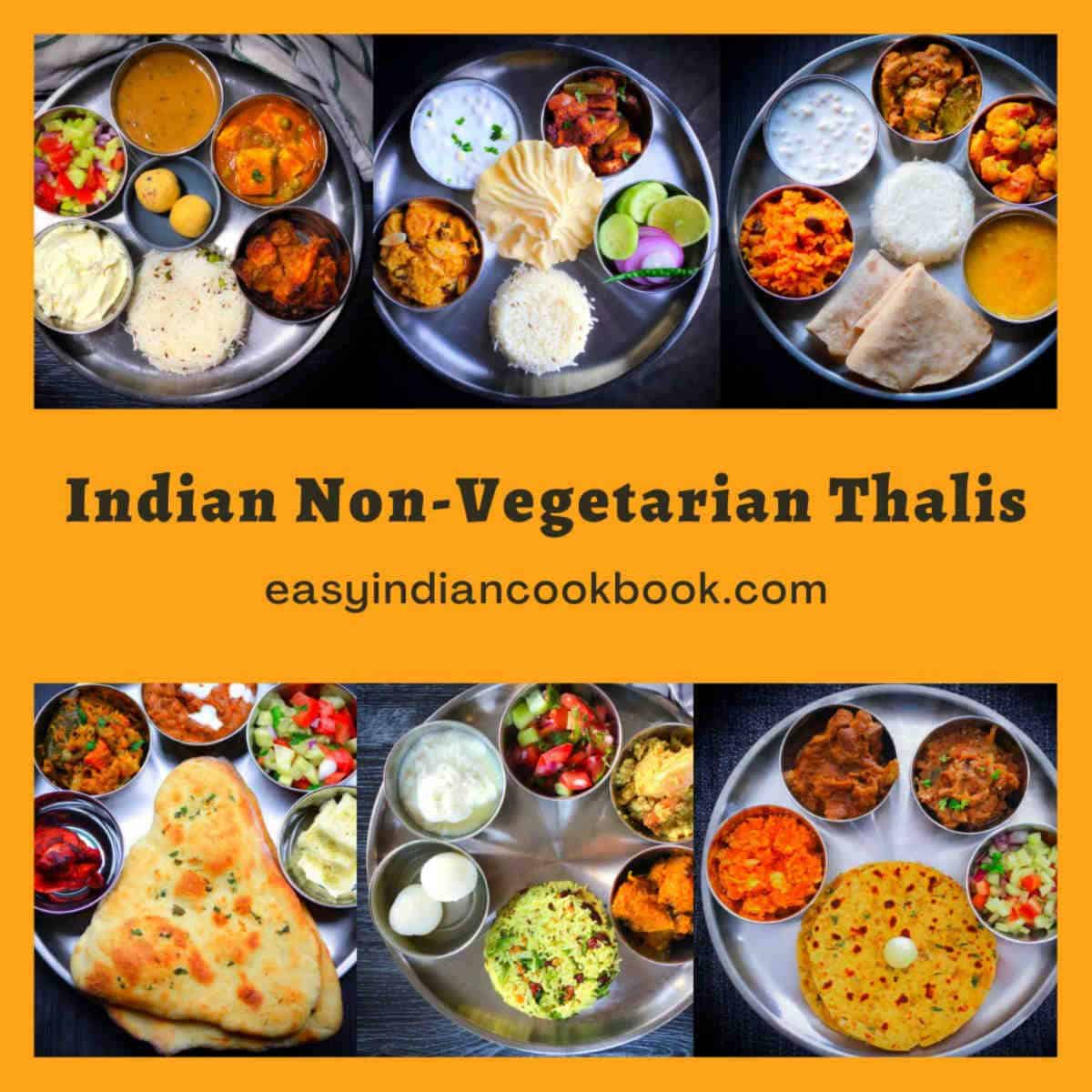Embark on a culinary journey through the vibrant world of Indian cuisine, where bold spices reign supreme, even without the use of eggs! This exploration unveils a treasure trove of egg-free Indian dishes, each a testament to the artistry of Indian cooking. From the fragrant aroma of delicately spiced curries to the satisfying textures of flavorful vegetable preparations, we’ll delve into the secrets of creating delicious and authentic Indian meals that cater to diverse dietary needs. Prepare to be captivated by the rich tapestry of flavors and the visual splendor of these remarkable dishes.
We will uncover the magic behind creating egg-free versions of classic recipes, exploring ingenious substitutions that preserve the original texture and taste. Discover a diverse range of spices, learning about their unique flavor profiles and how they contribute to the overall culinary experience. We’ll also guide you through step-by-step recipe creation, providing clear instructions and visual descriptions to ensure success in your culinary endeavors. Get ready to tantalize your taste buds and expand your cooking horizons!
Spices and Flavor Profiles

The vibrant tapestry of Indian cuisine is woven with threads of diverse spices, each contributing a unique layer of flavor and aroma. Egg-free Indian cooking, far from being a limitation, allows for an even bolder exploration of these spice palettes, showcasing their complexity without the interference of a dominant egg flavor. The heat levels, ranging from subtly warm to intensely fiery, are carefully balanced to create harmonious and unforgettable culinary experiences.
The spectrum of spices used in egg-free Indian cooking is vast. From the warm earthiness of turmeric and the pungent bite of ginger to the floral notes of cardamom and the fiery heat of chilies, each spice plays a crucial role in defining the character of a dish. Understanding these individual profiles is key to crafting balanced and flavorful meals.
Aromatic Spice Blend for Egg-Free Indian Cooking
This blend is designed for a vegetable curry, offering a complex flavor profile that balances warmth, pungency, and subtle sweetness. The rationale behind each ingredient choice is detailed below.
- Turmeric (1 tsp): Provides a warm, earthy base note and a vibrant golden hue. Its anti-inflammatory properties are an added bonus.
- Cumin (1 tsp): Offers a warm, earthy, and slightly bitter flavor that complements many vegetables.
- Coriander (1 tsp): Adds a citrusy, slightly sweet, and warming note, providing balance to the other spices.
- Garam Masala (1/2 tsp): A complex blend of ground spices (typically including cinnamon, cloves, cardamom, and black pepper), garam masala adds depth and warmth.
- Chili Powder (1/2 – 1 tsp): Adjusts the heat level according to preference. Kashmiri chili powder provides color without excessive heat, while other varieties offer varying degrees of spiciness.
- Mustard Seeds (1/2 tsp): Adds a pungent, slightly bitter note that awakens the palate at the beginning of the cooking process.
This blend can be adjusted to suit individual preferences. For instance, adding more chili powder will increase the heat, while increasing the coriander will enhance the sweetness. Reducing the cumin will lessen the bitterness.
Flavor Profile Comparison: Aloo Gobi vs. Chana Masala
Two popular egg-free Indian dishes, Aloo Gobi (potato and cauliflower curry) and Chana Masala (chickpea curry), showcase contrasting spice profiles despite sharing some common elements.
Aloo Gobi typically features a lighter spice blend, often emphasizing the warmth of turmeric and cumin, with a hint of coriander and a touch of chili powder for a gentle heat. The focus is on allowing the natural flavors of the potatoes and cauliflower to shine through, creating a relatively mild yet flavorful dish. The visual appearance is often a vibrant yellow-orange from the turmeric, with flecks of green from the cauliflower and brown from the potatoes. The texture is tender and slightly firm.
In contrast, Chana Masala boasts a richer, more complex spice blend. In addition to the common turmeric, cumin, and coriander, it frequently incorporates garam masala, ginger, garlic, and a greater quantity of chili powder for a more assertive heat. The spices are often sautéed before adding the chickpeas, creating a deeper, more intense flavor. The visual presentation is typically a deep reddish-brown, reflecting the use of spices and the long cooking time. The texture is soft and creamy from the chickpeas.
Recipe Development
Crafting egg-free Indian dishes requires a thoughtful approach to maintaining the delicate balance of texture and flavor that defines this vibrant cuisine. The absence of eggs, which often contribute binding, richness, and leavening, necessitates creative substitutions that seamlessly integrate into the recipe without compromising the final product’s integrity. This involves understanding the role eggs play in specific dishes and selecting appropriate replacements that mimic their functionalities.
Successful egg-free Indian cooking hinges on a deep understanding of ingredient properties and their interactions. For instance, the fluffy texture of some breads relies on the egg’s binding and leavening properties. Similarly, the richness and emulsification in curries can be impacted by the absence of egg yolks. Therefore, substitutions must address these functionalities individually to achieve comparable results. This often involves combining several substitutes to replicate the multi-faceted role of eggs.
Egg Substitutions in Indian Breads
Replacing eggs in Indian breads like paratha or roti requires careful consideration of texture and structure. Eggs contribute to the dough’s elasticity and flakiness. In a recipe for a traditional aloo paratha (potato-stuffed flatbread), for example, the egg typically helps bind the dough and create a soft, layered texture. We can substitute it with a combination of ingredients that mimic these qualities. Instead of one egg, we can use 1 tablespoon of yogurt (providing moisture and binding), 1 tablespoon of mashed potato (adding softness and structure), and a pinch of baking powder (enhancing leavening). This combination works synergistically to create a paratha that is remarkably similar in texture to the egg-containing version. The yogurt adds moisture and helps bind the flour, while the mashed potato contributes to the soft texture, and the baking powder helps to achieve the desired fluffiness. The final result is a soft, layered, and flavorful aloo paratha that is entirely egg-free.
Common Egg Substitutes in Indian Cooking
Understanding the properties of various egg substitutes is crucial for successful egg-free Indian cooking. The choice of substitute depends largely on the dish’s specific requirements.
The following table summarizes common egg substitutes and their applications:
| Substitute | Properties | Suitable for | Considerations |
|---|---|---|---|
| Yogurt/Curd | Adds moisture, binds ingredients, contributes to tenderness | Breads, batters, some curries | May slightly alter the flavor; amount may need adjustment based on thickness |
| Mashed Banana | Adds moisture, sweetness, binding | Cakes, muffins, some breads | May impart a slight banana flavor; best for sweeter dishes |
| Applesauce | Adds moisture, sweetness, binding | Cakes, muffins, some breads | Similar to banana, may add a subtle apple flavor |
| Flaxseed Meal/Chia Seeds | Creates a gel-like consistency when mixed with water, acts as a binder | Breads, pancakes, vegan meat substitutes | Requires pre-mixing with water; can add a slightly earthy flavor |
| Silken Tofu | Adds richness, moisture, binding | Curries, vegan omelets | Mild flavor, easily blends into dishes |
Step-by-Step Recipe Creation
Creating delicious and authentic egg-free Indian dishes requires careful attention to detail and a deep understanding of spice combinations. This section provides a step-by-step guide for preparing a popular egg-free dish, along with a simplified recipe ideal for culinary beginners. We will focus on visual descriptions to help you understand the transformation of ingredients throughout the cooking process.
Aloo Gobi Recipe: A Step-by-Step Guide
This recipe details the creation of Aloo Gobi, a classic Indian dish of potatoes and cauliflower, bursting with vibrant spices. The dish is naturally egg-free and offers a delightful blend of textures and flavors.
- Preparation (15 minutes): Begin by washing and chopping one medium-sized head of cauliflower into florets and two medium-sized potatoes into roughly 1-inch cubes. Finely chop one medium onion, two cloves of garlic, and one-inch piece of ginger. At this stage, the ingredients appear fresh and vibrant: the cauliflower, snowy white; the potatoes, a creamy beige; the onion, a pearly white; and the ginger and garlic, a pale yellowish-brown.
- Spice Blending (5 minutes): In a small bowl, combine 1 teaspoon of turmeric powder (giving a bright yellow hue), 1 teaspoon of cumin powder (deep brown), ½ teaspoon of coriander powder (light brown), ½ teaspoon of garam masala (a rich, dark brown blend), ½ teaspoon of chili powder (ranging from brick red to deep orange depending on the type), and a pinch of asafoetida (hing, a pale yellow powder with a pungent aroma). The spices, when mixed, create a visually captivating blend of warm earthy tones.
- Sautéing Aromatics (5 minutes): Heat 2 tablespoons of vegetable oil in a large pan or wok over medium heat. Add the chopped onions and sauté until translucent and golden, about 3-5 minutes. The onions transform from pearly white to a soft, golden brown, releasing their sweet aroma. Then, add the ginger and garlic and sauté for another minute until fragrant. The ginger and garlic add a pungent, aromatic note, their pale colors deepening slightly.
- Cooking Vegetables (15 minutes): Add the potatoes and cauliflower florets to the pan. Stir well to coat them with the oil and sauté for 2-3 minutes. Then, add the spice blend and mix thoroughly. The vegetables begin to soften, absorbing the vibrant colors of the spices. Continue to cook, stirring occasionally, until the potatoes and cauliflower are tender, about 10-12 minutes. The vegetables will gradually soften, becoming more translucent, while the sauce thickens slightly.
- Finishing Touches (5 minutes): Stir in ½ cup of water or vegetable broth to create a light gravy. Add salt to taste. Simmer for another 2-3 minutes, allowing the flavors to meld. The sauce thickens into a creamy consistency, coating the vegetables evenly. Garnish with fresh cilantro (bright green) for a final touch of freshness and color. The final dish is a vibrant mix of colors and textures, showcasing the earthy tones of the spices and the bright green of the cilantro.
Simple Egg-Free Chana Masala (Chickpea Curry)
This recipe is designed for beginners and focuses on simplicity and ease of preparation.
- Preparation (10 minutes): Drain and rinse one can (15 ounces) of chickpeas. Chop one small onion and one small tomato. Mince one clove of garlic.
- Cooking (15 minutes): Heat 1 tablespoon of oil in a pan. Add the onion and sauté until softened. Add the garlic and sauté for 30 seconds. Add 1 teaspoon of garam masala, ½ teaspoon of turmeric powder, ½ teaspoon of chili powder (adjust to your spice preference), and a pinch of salt. Stir and cook for 1 minute. Add the chickpeas and tomatoes, stir well, and add ½ cup of water. Bring to a simmer, cover, and cook for 10 minutes, or until the sauce has thickened slightly. The final dish is a rich, flavorful curry with tender chickpeas and a slightly thickened sauce. The color will be a deep orange-brown from the spices and tomatoes.
This exploration of egg-free Indian dishes, bursting with bold spices, has unveiled a world of culinary possibilities. We’ve journeyed through a spectrum of flavors, textures, and aromas, showcasing the versatility of Indian cuisine and its ability to adapt to various dietary preferences. From mastering egg substitutions to understanding the nuances of spice blends, you now possess the knowledge and inspiration to create stunning, flavorful meals that are both delicious and inclusive. So, gather your spices, embrace the vibrant colors, and embark on your own culinary adventure, crafting unforgettable egg-free Indian feasts.
FAQ Overview
Can I make these dishes ahead of time?
Many of these dishes taste even better the next day! Store leftovers properly in airtight containers in the refrigerator.
What are some good substitutes for coconut milk?
Cashew cream, full-fat yogurt, or even a combination of vegetable broth and a little oil can be used depending on the dish.
Where can I find authentic Indian spices?
Indian grocery stores or online retailers specializing in Indian spices often offer the best quality and widest variety.
Are these dishes suitable for children?
Most are, but adjust spice levels according to your children’s preferences. You can always start with a smaller amount of chili powder and add more to taste.


